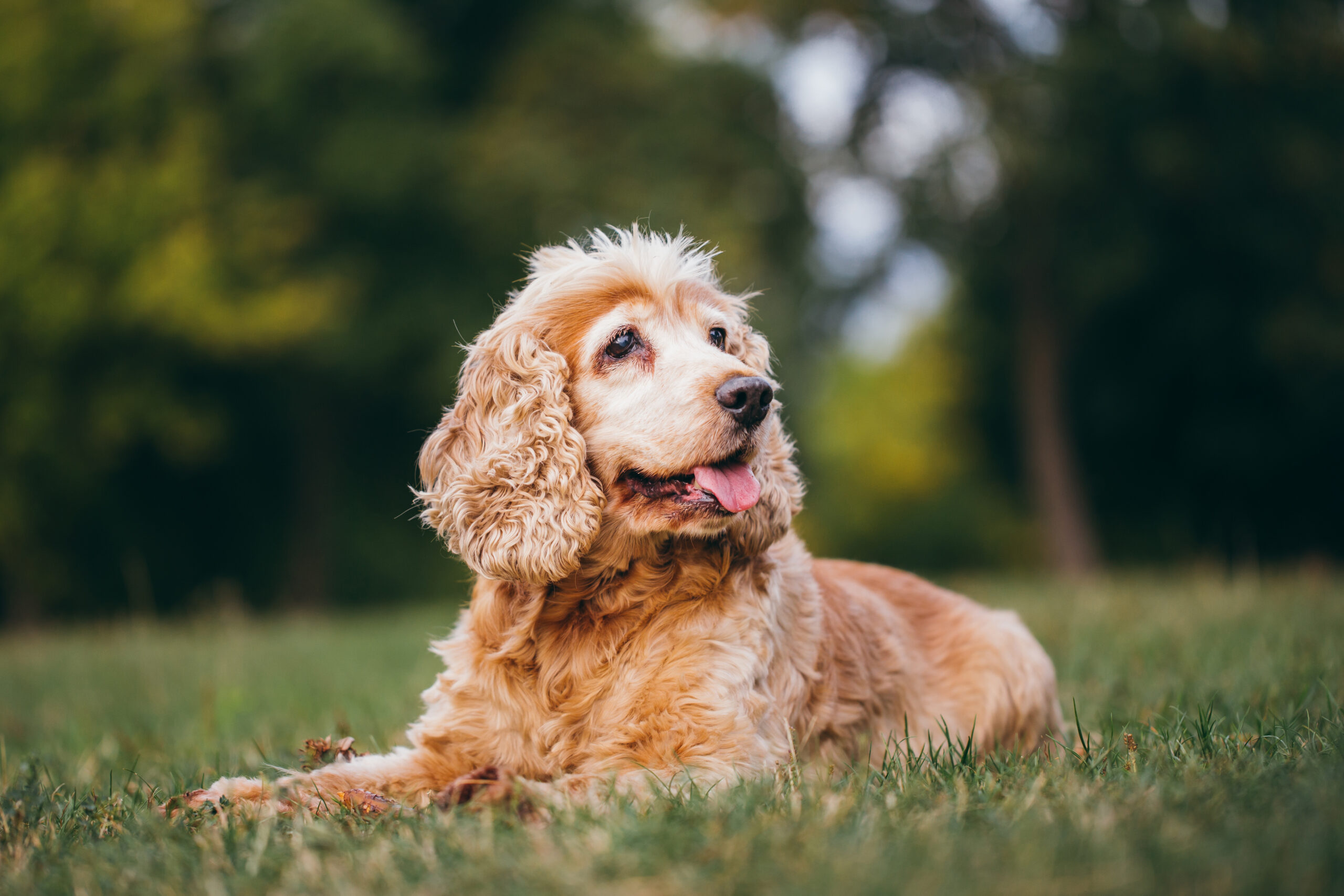
Check out our latest products
Discover ways to help your senior dog adjust to his new home with tips on building trust, easing anxiety, creating routines, and supporting age-related needs.
Adopting an older dog is very rewarding. Whether his soulful eyes or gentle energy drew you in, you’re giving him the chance to live out his life surrounded by love. After you bring him home, the next step is to adapt him to his new circumstances. Let’s explore how to help a newly adopted senior dog adjust and what this transition involves. You’ll also learn how to support him as he builds trust and establishes new routines.
Help your senior dog settle in
In rescue and training circles, we often talk about the “power of threes,” the first three days, three weeks, and three months after adoption. It gives you a general idea of how long it can take for a dog to settle in and feel like part of the family.
- First three days: Your new dog might be in shell shock. He’s taking in all the new smells, sounds, people, and routines. Don’t be surprised if he seems reserved, anxious, or even shut down. This is normal.
- Three weeks in: You’ll likely see your older dog start to relax a bit. He might follow you around more, engage with toys, or show curiosity about his environment. “Testing the waters” just means he feels safer expressing himself — and that’s a good thing.
- At three months: This is when you and your dog truly start to bond. Your senior dog will begin to understand the household routine and feel like part of the family. You’re forming habits, building trust, and learning more about each other every day.
Establish a potty routine from day one
Even senior dogs may need help with potty training in a new environment. It’s best to assume your new friend isn’t housetrained in your home. Stress, new routines, and unfamiliar surfaces can all lead to accidents. Schedule a meet-and-greet with your veterinarian early to check your dog’s overall health. If accidents continue, your vet can rule out underlying issues.
- Take your dog out often, especially after eating, napping, or playing.
- Go with him and keep him on a leash so you can watch and guide him if needed.
- If he goes in the right spot, praise him softly and give him a small treat.
Hint: If he has an accident in the house, just clean it up and head back outside. No scolding.
When you stick to a consistent routine, your dog learns what to expect. Potty training isn’t just about where to go; it’s part of helping him adjust to his new home.
Expect some separation anxiety from your senior dog
It’s common for newly adopted senior dogs to become anxious when left alone. They’ve been through a lot of change and loss, and it’s natural for them to feel unsure when their new person disappears.
- If your dog follows you constantly, whines when you leave, or panics when alone, it’s time to slowly help him acclimate. Start by stepping out for just a few seconds, then come right back in. Build from there. Practice short absences. Pair your leaving with a high-value chew or stuffed food toy. Don’t sneak out, just calmly go and return, over and over.
- You can use a pet cam or baby monitor to check on your senior dog while you’re away. That way, you can keep him safe and gradually build up time apart without causing panic.
- If your dog isn’t ready to be left alone for long, adjust your schedule as much as you can to accommodate his needs. You want to avoid pushing your dog past his threshold while you work on building his comfort and confidence.
Hint: Ask family or friends to help or line up a dogsitter.
This kind of training takes time, but with consistency and patience, your senior dog can learn that good things happen when you leave — and most importantly, that you always come back.
Modify your dog’s training for his age and ability
Keep in mind that your senior dog may have hearing or vision loss, and mobility issues. If he can’t hear well, use clear hand signals or gentle touch cues to teach him what you need. For vision loss, keep the environment consistent and use voice cues or movement to help guide him. Train in the same spot every session to help him understand what to expect.
If your senior dog struggles with mobility, avoid asking him to sit or lie on hard surfaces. Reinforce what’s comfortable, such as standing calmly, making eye contact, or touching your hand when you reach out. Place non-slip runners and soft beds around your home to help your senior dog feel more comfortable.
Hint: Older dogs can learn. You just need to tweak things to fit their abilities.
Keep training sessions short. One to three minutes is plenty in the beginning. Use tiny treats or part of their daily food as rewards and always end on a win.
Keep your older dog’s mind engaged
Even if your senior dog isn’t learning new cues, he will still benefit from gentle enrichment. Short, simple activities can help reduce restlessness, boost confidence, and bring a little spark to his day.
- Use snuffle mats, rolled towels, or a flexible silicone muffin tin for food games.
- Play a slow game of “find it” with treats or favorite toys hidden around the room.
- Offer soft chews or stuffed toys he can work on without frustration.
- Take short walks in quiet areas, letting your dog sniff and explore at his own pace. If that’s too much, use a stroller so he can ride comfortably and still enjoy the experience.
You don’t need loud or high-energy activities — just offer simple ways for your dog to think, sniff, and stay engaged.
Take it slow and keep it simple
It takes time for a senior dog to adjust to his new home, and to learn new things. Some days might feel slow or uncertain. That’s okay. Your dog is still figuring things out, and so are you.
Stick to simple routines. Give your dog space when he needs it and connect when he’s ready. Your training sessions might not look perfect — and that’s okay. What matters is helping your older dog feel safe, settled, and part of the family.
Hint: Celebrate the small things. A soft glance. A quiet tail wag. His willingness to lie near you instead of across the room. That’s how trust builds.
Now turn off your computer, put your phone down, and go spend some time with your senior dog. A short walk. A gentle brushing session. A shared snack on the couch. Any time you spend with your new friend means everything to him.
Your new senior dog: start with trust, not training
Your older dog may have gone through big changes recently: losing a home, losing a person, moving between shelters or fosters. Even if he came from a loving situation, everything around him is unfamiliar now. Give him time. Let him move at his own pace.
Instead of jumping into training routines right away, give your senior dog time to decompress and get comfortable. Keep things low-key. Sit on the floor with him. Speak softly. Hand-feed him a few meals to help build his trust. The goal when helping a newly adopted senior dog adjust isn’t obedience — it’s connection.
Helping an older dog with cognitive changes
Some older dogs begin to show signs of cognitive decline. You might notice confusion, pacing, restlessness, or changes in how your dog responds to daily routines. He may seem unsettled at night, wander more, or forget things he used to know.
- Keep your dog’s days predictable.
- Feed meals at the same time.
- Use the same walking routes.
- Avoid major schedule changes whenever possible.
- Stick to quiet, familiar spaces and avoid overstimulating environments.
If your older dog seems lost or unsure, speak calmly and guide him gently. Give him time to process what’s happening around him. He may need more breaks, more sleep, and more reassurance.
Also keep in mind that older dogs with cognitive decline may not need to learn anything new. They just need to feel safe, at ease, and part of everyday life.
Post Views: 22
Tonya Wilhelm is a dog training and cat care specialist who has traveled the US promoting positive ways of preventing and managing behavior issues with a holistic approach. Named one of the top ten dog trainers in the US, she has helped thousands build happy relationships with their dogs with humane, positive training methods. She wrote Proactive Puppy Care, and other books. Tonya offers group and private dog training classes, provides training and behavior services via phone and online, and does workshops at pet expos (raisingyourpetsnaturally.com).


![[PETHROOM] Cat Nail Clipper Trimmer for Indoor Cats with Circular Cut Hole (2mm) | Premium Sturdy Stainless Steel Blade Cat Claw | Safe, Easy, Accurate, Quiet & Fast | Avoid Overcutting](https://m.media-amazon.com/images/I/6156hi88deL._AC_SL1298_.jpg)
![[PETHROOM] Professional Eye Comb for Pets | Stainless Steel Tear Stain Remover for Cats & Dogs | Gentle Round-Head Grooming Tool | Compact & Portable for Eye Gunk Removal](https://m.media-amazon.com/images/I/71+W758uwXL._SL1500_.jpg)
![[petora] BRUSH ON ME Gentle Facial & Eye Comb for Dogs & Cats | Smooth & Stress-Free Tear Stain Remover | Fine-Tooth Grooming Tool with Rounded Tips | Comfortable Grip for Daily Pet Grooming](https://m.media-amazon.com/images/I/81hzVmjgV1L._SL1500_.jpg)









